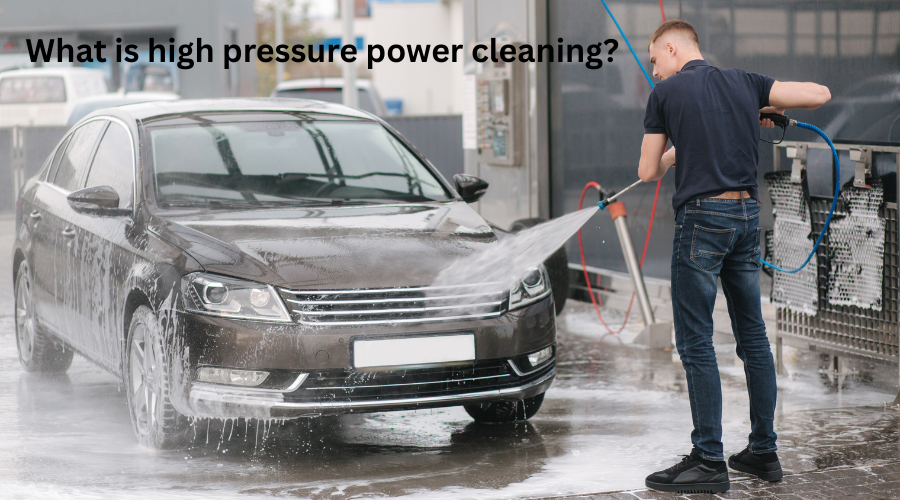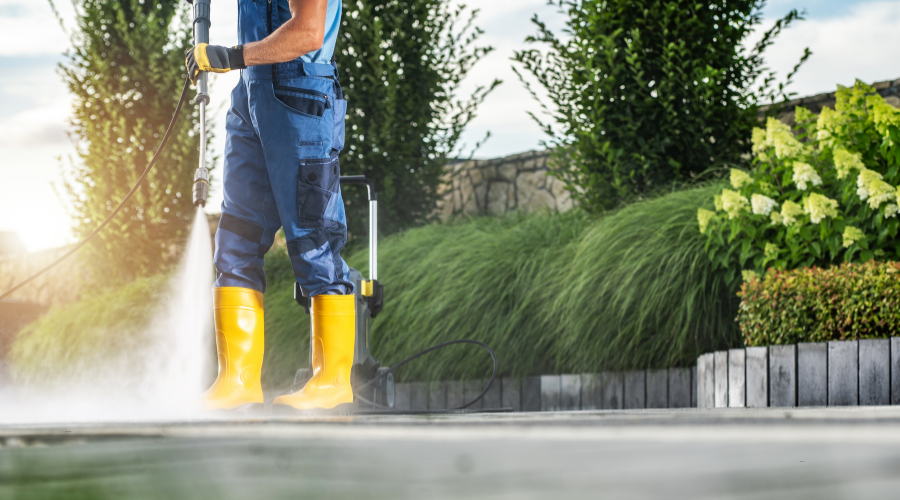
May 9,2025
High pressure is power cleaning; this cleaning operation is also referred to as power washing or pressure washing. A heaving stream of water is utilized to clean surfaces from a wide rang of contaminants like dirt, algae, mold, mildew, paint, grease, and other waste. Water passes through a specialized nozzle at a high velocity and the jet of water is capable of breaking and washing away even the most stubborn buildup.
Usually, such cleaning is undertaken with a high-pressure washer-an electric or gas powered device, which gives the washing water a pressure ranging from 1,300 to 4,000 PSI, depending on use.
The most common way of defining them is by defining the minor difference between both.
• Pressure Washing: washing with water at high pressure but no heat.
• Power Washing: washing with water at high pressure with heat; this is more effective for dislodging grease, oil, and other organic matter.
High pressure power cleaning for many professional services means both pressure washing and power washing, depending on what surface is being cleaned and what type of substance is being removed.
The working of pressure cleaning is simple but works very well. This is how it works:
1. Water Inflow: The pressure washer connects to a water source, typically a hose or direct plumbing.
2. Motor Activation: A pump whose engine or electric motor powers thrusts water at high pressure by accelerating water.
3. The nozzle controls the spray; it adjusts concentration or broadness of flow.
4. Detergents: If the aim is to go above and beyond and deliver a cleaning job that is truly outstanding then cleaning agents can be mixed with the water stream.

High-pressure cleaning works well but is not suitable for all surfaces or situations. Keep these important points in mind:
First, consider the surface material. Some surfaces, like old brick, softwood, painted walls, or asphalt shingles, can be damaged by high water pressure. Always set the PSI to match the type of surface you are cleaning.
Next, think about water runoff. Strong water jets can wash away dirt and debris into the environment. Make sure your runoff follows local water rules and regulations.
Neglecting safety is a mistake that many people make during pressure cleaning. The power of water pressure washers can cause injuries if not contained. Wearing protective gear can minimize this risk. Moreover the equipment should also be handled with care.
Lastly, decide whether to do the job yourself or hire a professional. Homeowners can rent or buy pressure washers for small tasks. But for big or risky jobs, it is better to hire experts who know how to use the equipment safely and get the best results.
High-pressure power washing is preferred across the board by professionals around the world. And here are the reasons:
Unlike common scrubbing or hosing down high-pressure cleaning penetrates into the porous surfaces to get rid of deep grime, mildew, or oil stains that lie deep inside.
Manual cleaning of large areas can take several hours, while with only a push of a button, a pressure washer will perform that job in minutes, with less effort from the user.
Using little or no chemicals (in most cases), pressure washing is cleaning done with water, which is a likely eco-friendly option when done with care.
Be it restoring a faded wooden deck, or sprucing up the storefront, pressure washing greatly enhances curb appeal.
Dirty things go to build up harmful depositions like mold, algae, and rust which can cause long-term damage. Cleaning helps to avoid this accumulation.
Driveways and sidewalks
House siding and fences
Roofs and gutters
Decks and patios
Outdoor furniture
Storefronts and building exteriors
Parking lots and garages
Construction equipment
Manufacturing floors and machinery
Loading docks and warehouse interiors
Trucks, trailers, buses
Agricultural machinery
Marine vessels
Not every pressure washer is made the same. Depending on the work, choose from Electric and Gas or Cold and Hot Water:
Electric vs. Gas: While with electric ones are particularly useful in small tasks since they operate noiselessly, the gas ones have a greater value in high-pressure works.
Cold and hot: Hot water works best on oil, grease, and industrial messes.
Nozzle Attachments: Variable nozzles help you regulate the spray pressure and angle.
Some of the expensive commercial models also have arrangements for the recycling of water, chemical injection systems, or dual-operator functionalities.
High pressure power cleaning is a powerful, efficient, and economical way of cleaning surfaces and equipment. Whether you are a homeowner trying to bring your deck back to life or a facility manager maintaining with safety an industrial site, nothing beats this method for results with minimal impact on the environment.
With the right tools and knowledge-or the support of professional services-it is possible to have very water-strong results keeping your property looking its best, year-round.
What surfaces can be safely cleaned with high pressure power cleaning?
High pressure power cleaning is safe for many outdoor surfaces like concrete driveways, brick walls, metal equipment, stone patios, and vinyl siding. Softer materials such as painted wood, asphalt shingles, or old mortar may need gentler cleaning methods or lower pressure to avoid damage. Always set the PSI and choose the right nozzle for each type of surface.
Is high pressure power cleaning environmentally friendly?
Power cleaning with high pressure is environmentally friendly when used properly. It mostly uses water, so there’s usually no need for chemicals. If you are concerned about runoff, you can use biodegradable cleaning solutions or systems that recover water to lessen environmental impact.
How often should I schedule high pressure power cleaning?
For homes, cleaning driveways, decks, and siding once a year is enough. Businesses with heavy foot traffic or pollution may need cleanings every three months or each season to keep things looking good and safe.